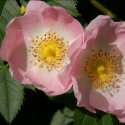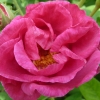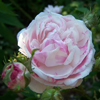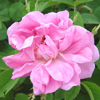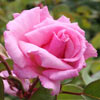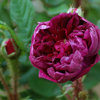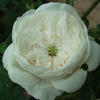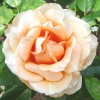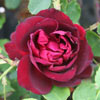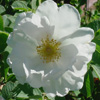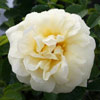Friday 7th July, 2017
Hi
Its been any thing but dry so far this winter and the only thing that has gone dry lately is us with the advent of the Dry July campaign that we saw on the The AM show the other morning. Not that we started exactly on the 1st of the month as we had visitors for dinner that night but can count the fact that its now been 4 or is it 5 nights without that pre dinner drink or two...... I think that the biggest test is going to be tonight as we are going to friends for dinner and after my pre warning conversation with the said friends, the comment was made " oh!! you're not going to be boring going through that phase again.." ... Well yes we are but I sure that it doesn't make us boring or unsociable, after all a tall glass with lots of ice, sparkling water and a squeeze of lime will be reminiscent of that ubiquitous G & T, well will be in my imagination anyways.
But hey it was time to break that nightly habit and perhaps Ill get a few more projects done in the evenings that seem to just get put off for another night.. Like sort all the hard drives that have years of gardens, flowers and plants pics into some sort of order that I can use, or read all my gardening magazines.
Speaking of such I have grabbed my copy of Peter Beales Roses which in the early days of this nursery was my absolute bible and still is a fantastic resource today as he has written and described the generations of roses that I touched on last week even if briefly.
It would seem that the Chinese were breeding roses as early as the tenth century but by the time of the 18th century journeys to the east had increased and it wasn't long before china roses were in Europe. 1781 saw Rosa chinensis or Old Blush was planted in Holland and its the
China roses that are responsible for the free flowering genes in the now modern roses of today.
It was around the 15th and 16th centuries that man really started to dabble in the progeny of roses with the Dutch pioneering work in the improved strains of the Centifolias, DNA testing has proved that Centifolias have the genes of the species
Gallicas, Moschata, Canina and
Damascena.. and introducing over 200 varieties between 1550 and 1710
The first
Moss rose was a sport from a Centifolia, which were bred and fashionable for a short time but didn't really take off.
Gallicas are a very old breed existing in medieval times of which Galllica officinalis or the Apothecary's rose was responsible for rose oil in Europe along with Rosa Gallica versicolour or Rosa Mundi named after Fair Rosamund mistress of King Henry 2nd.
The crusaders of 12th and 13th century brought Damask roses back from the middle east to Europe which would have been used in the breeding programmes way back then.
The Albas also go back in time and certainly existed in medieval times but are thought to have Canina and Damascena and or Gallica as the other parent.
Later roses include the
Portlands bred towards the end of the 18th century and then soon after the Bourbons started to appear. The Bourbons are mostly excellent shrub roses, though there are some notable climbers. like Zepherine Drouhin and Kathleen Harrop.
According Peter Beale the bourbons can be divided into two camps those that exhibit the characteristics of their china parent and those of their Damask ancestors.
This brief outline isn't finished as the
Noisettes enter around this time followed by the
Teas roses and there have been other species of roses that have influenced other generations of roses that were bred in the 19th century
As we move towards those modern roses of today knowing that they have a very complex history and gene pool of centuries .
By now I m hoping that all have done some sort of winter spraying.... whether you are the kind that do a lime sulphur first and follow that up a couple of weeks later with a Copper and conqueror oil, or two, perhaps even three. This should get roses and fruit trees and all that you spray off to a good start come the spring as the oil and copper will deal to overwintering spores and insect eggs.
Now its early to be pruning but certainly time to be thinking about this task ahead. To be honest ours is all but done as we have had a window of opportunity, so the roses and apple trees are pruned because as of next week we will be frantically potting fruit and ornamental trees again.
Get all your gear sorted...... gloves, sharp secateurs (we use the ARS range which are top of the range and just brilliant), pruning saw, even a small wire brush to brush the crown to promote new growth from the base. Also in my case, reading glasses as I can no longer see those buds as clearly as I used to be able to.
The whole objective of pruning is to remove the flowered wood and diseased wood leaving stem tissue that will flower prolifically in the coming spring.
If you have a new seasons rose bush then you will spend the next three years creating a framework, so with a new rose you will basically just tip to promote as much growth as possible for the coming season. From there you will remove the spent flowers and the resulting branches will be your new frame work, usually creating a bush of about 5 to 7 canes which will carry the flowers for years to come.
For an old established bush, take a good look at it and make some decisions, usually remove all old diseased or broken canes first, then look at the the existing frame work and check to see if the older frame work canes are still in good condition and will carry heads of flowers for a few more years to come. Frame work canes will usually produce good crops of flowers for some five to 8 years but its your job to promote replacement canes so when they age they can be removed.
Remove all the spent flower canes but leave around 3 to 4 buds ( approx 7 to 10 cm and pencil thickness) each close to the base where these come away from the framework. These buds will carry the first of this coming springs flowers. Now if you are one of those dead headers rather than removing the flowered stem then you may well have to cut back three growth flushes to get your rose back to its framework.
Don't make those rose pruning cuts too steep, as many do. I think that the angle is technically 45 degrees but Ill go for almost flat or a very slight angle. The right cut is from above the bud running behind the bud but the back of the cut is still above the bud. Too often I see cuts that run down behind the bud and if you imagine veins there, then the bud has just lost its blood supply...... It sounds harder than what it is and I have years behind me looking to where the buds are. To make a good cut takes practice so just practice. Last tip here is cut with the secateurs with the cutting blade on the plant side and the crushing part on the stem that is to be removed. A little thing but good practice!
Finally leave the bush with a nice shape, slightly rounded that will enhance the rose's natural form.
If you think you need to know more then come along to the last of the
Waikato Rose Society rose pruning sessions. These were hugely successful last weekend with a good turnout. If you couldn't get there, then don't miss out, we have two last sessions coming up. Pick those Rosarian brains for choice of roses, pruning, feeding and or spraying then get yourself to one of the last two session.
These events are held rain or shine. It is helpful but not essential if you register your intention to attend by response to this newsletter or if you are a
facebook user events have been posted for each date, you can click
here to choose the event you would like to attend or the dated links below.
Its no biggie if you haven't registered or emailed us ... just come along, don't miss out on the chance to ask your questions!Daphne Everyones favourite has arrived in, we have a great selection of varieties including a new one to us called Helene. We don't have a pic of this one in flower yet but wont be long. We have all the old favs including Lucanthe and Lucanthe Alba but also Bholua and a variegated Burkwoodii. These lovelies will give you years of joy and fragrance once you find the right spot for them. Morning sun, moistness and lots of humus rich.
Rosemary standards are in flower now, they love full sun and are great for culinary use as well as looking good and we have bushes in as well Lady in White for a white flowering variety and Blue lagoon for a lovely blue.
Other standards in are
Viburnum Burkwoodii, these are gorgeous fragrant flowering deciduous plants that will wow you in late winter to spring.
Calicapa standards and bush forms are also available with some berries still clothing the bush.
Always popular are the
Laurus Nobilis AKA Bay Tree standards. These are a good even selection and will disappear quickly so put your order in fast to avoid disappointment.
Congrats to Team New Zealand for a superb victorious campaign, welcome home and thank you for such a massive effort. Good luck to the All Blacks tomorrow against the Lions. Have a great weekend everyone, play hard, do it with style, and enjoy yourselves.
Lloyd, Harry and the Wairere Team
Make it a Wairere weekend where even GNOMES know that gardening's not a drag.
